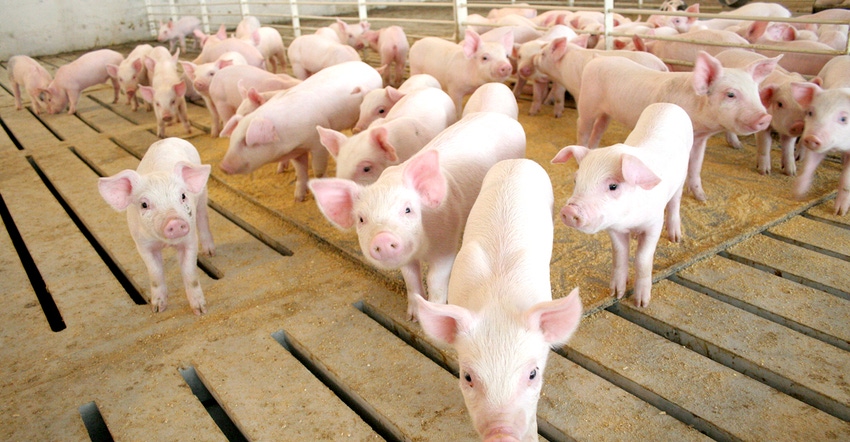
There’s a new clue in the mystery of how dangerous swine and cattle viruses from China and Europe might spread throughout the U.S. despite extremely high biosecurity measures in place on many U.S. farms.
A study by South Dakota State University, Kansas State University and Pipestone Applied Research shows that many viruses could survive a simulated journey from Asia or Europe to the U.S. in containers of feed.
Feed ingredients posing the biggest threat include soy oil cake, high protein soybean meal, lysine, choline, vitamin D, pet food, dried distillers grains with solubles (DDGS) and sausage casings
SDSU, KSU and Pipestone Applied Research — a division of Pipestone Veterinary Services — examined the ability of 10 different viruses to survive 12 commonly imported feed ingredients and products by replicating the environmental conditions in shipping containers.
An SDSU team modeled the ability of 11 of the viruses to survive the 37-day simulated journey from Beijing, China, to Des Moines, Iowa.
KSU, which has a Level 3 biosecurity laboratory, modeled the ability of the African swine fever virus to survive the 30-day trip from Warsaw, Poland, to Des Moines. Des Moines was chosen as the destination because ingredients are mixed at a feed mills in Des Moines and then distributed to swine farms in the Midwest.
Seven viruses survived in conventional soybean meal.
Three viruses survived in organic (non-hexane treated) soybean meal.
Four viruses survived in soy oil cake, which is imported from China in the largest quantities of any of the ingredients evaluated.
Two viruses survived in DDGS, which ranks second among imported ingredients.
Four viruses survived in sausage casings. Sausage casings returning to the U.S. from China has quadrupled from 2012 to 2016.
Senecavirus A, a surrogate virus for foot and mouth disease virus, survived in all the ingredients except organic soybean meal.
Porcine sapelovirus survived in all ingredients except DDGS and choline.
Porcine epidemic diarrhea virus (PEDV) survived in five ingredients.
African swine fever survived in eight ingredients. It was most stable of the three viruses in conventional soybean meal.
A combination of porcine reproductive and respiratory syndrome virus (PRRSV) and PEDV survived the simulated trip from China in soybean meal and DDGS.
“This is a very important study,” says Scott Dee, director of research at Pipestone Applied Research, a division of Pipestone Systems, of Pipestone, Minn., which manages 70 sow barns for independent Midwest farmers. “For the first time, we have data to support that certain feed ingredients may be risk factors for moving viruses between farms and around the world.”
There are several implications for all pork, milk and beef producers, he says:
1. Continue using sound biosecurity practices. Limiting visitor and truck traffic to the farm, filtering the air, having employees shower in and out of confinement barns and other measures are still important.
2. Know where your feed is coming from.
3. Be wary of using imported feed ingredients.
4. Watch for news and recommendations on how to handle imported feed in the future. SDSU, KSU and Pipestone Applied Research are trying to find ways to “clean” feed ingredients of viruses before they get to U.S. feed mills or farms. It may involve treating imported feed with something, or holding imported feed in quarantine for a period until all viruses are dead.
Christine Deflanian, writer for the SDSU Department of Agriculture and Biological Sciences, contributed to this article.
About the Author(s)
You May Also Like






